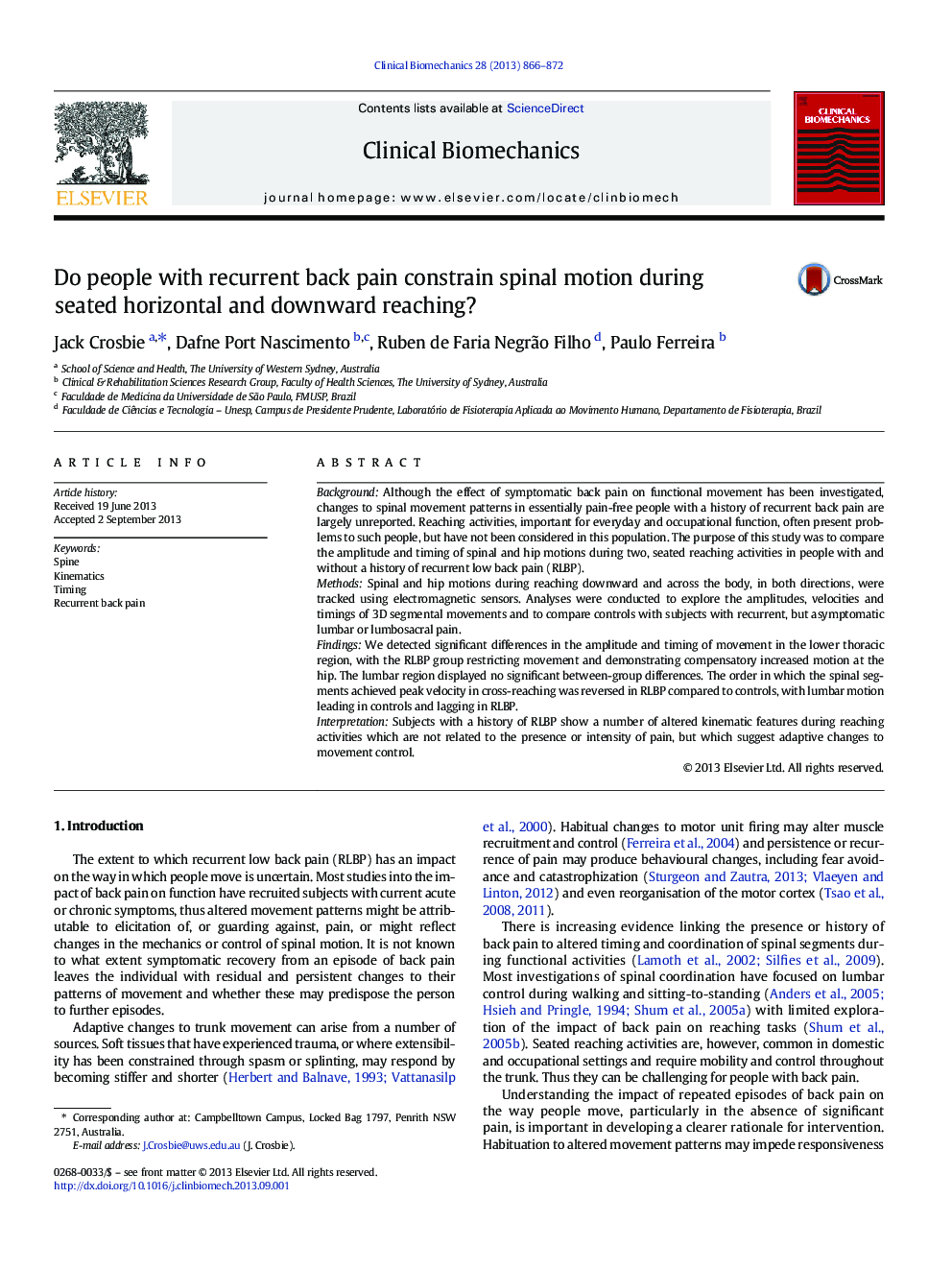| Article ID | Journal | Published Year | Pages | File Type |
|---|---|---|---|---|
| 6205105 | Clinical Biomechanics | 2013 | 7 Pages |
BackgroundAlthough the effect of symptomatic back pain on functional movement has been investigated, changes to spinal movement patterns in essentially pain-free people with a history of recurrent back pain are largely unreported. Reaching activities, important for everyday and occupational function, often present problems to such people, but have not been considered in this population. The purpose of this study was to compare the amplitude and timing of spinal and hip motions during two, seated reaching activities in people with and without a history of recurrent low back pain (RLBP).MethodsSpinal and hip motions during reaching downward and across the body, in both directions, were tracked using electromagnetic sensors. Analyses were conducted to explore the amplitudes, velocities and timings of 3D segmental movements and to compare controls with subjects with recurrent, but asymptomatic lumbar or lumbosacral pain.FindingsWe detected significant differences in the amplitude and timing of movement in the lower thoracic region, with the RLBP group restricting movement and demonstrating compensatory increased motion at the hip. The lumbar region displayed no significant between-group differences. The order in which the spinal segments achieved peak velocity in cross-reaching was reversed in RLBP compared to controls, with lumbar motion leading in controls and lagging in RLBP.InterpretationSubjects with a history of RLBP show a number of altered kinematic features during reaching activities which are not related to the presence or intensity of pain, but which suggest adaptive changes to movement control.
